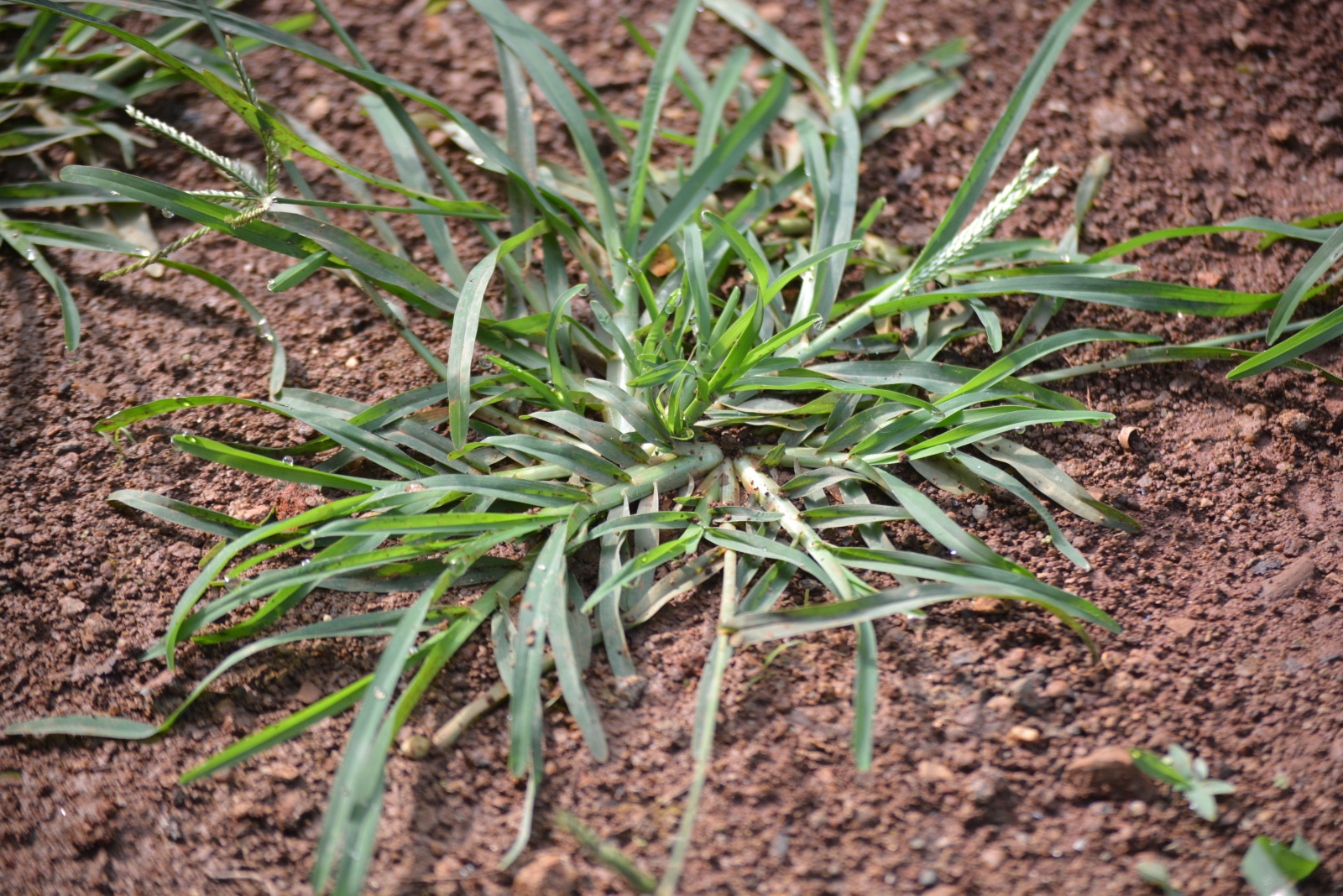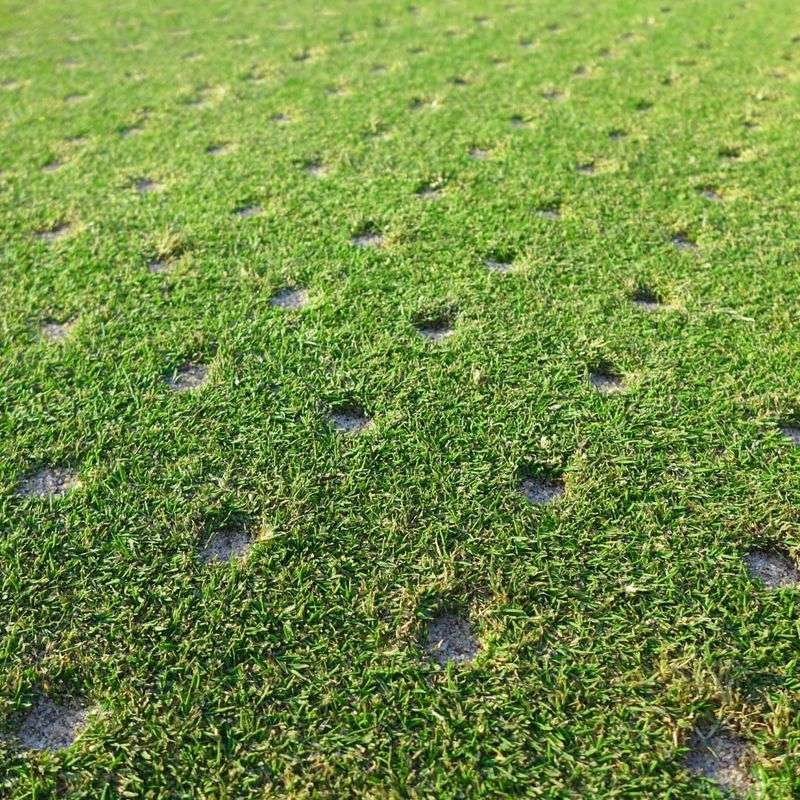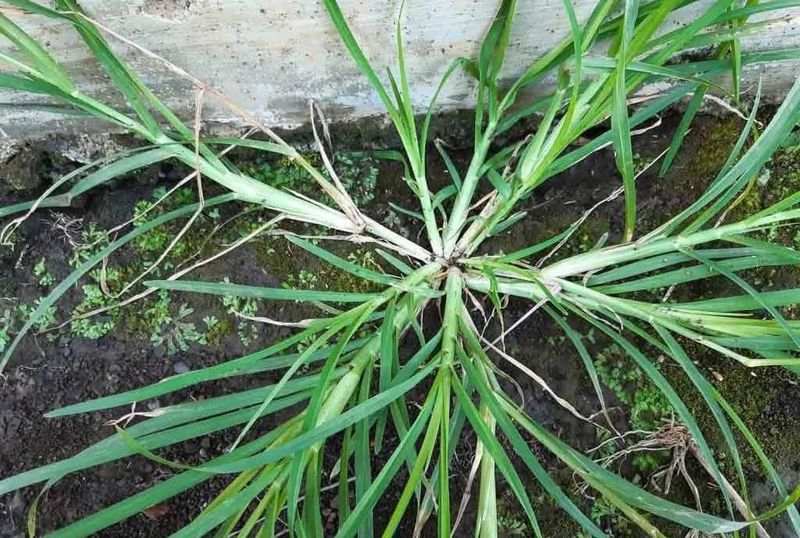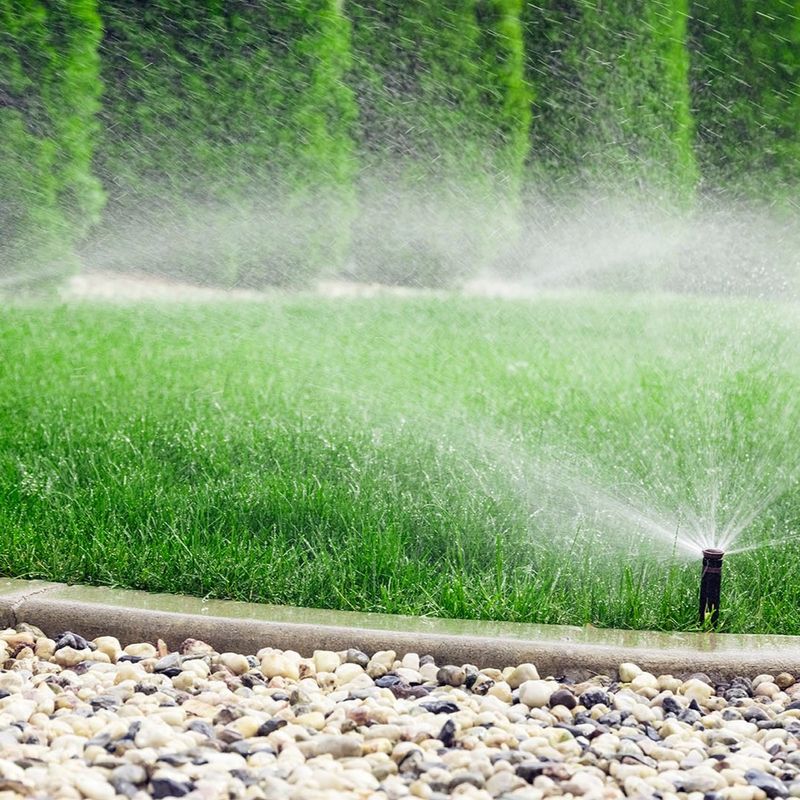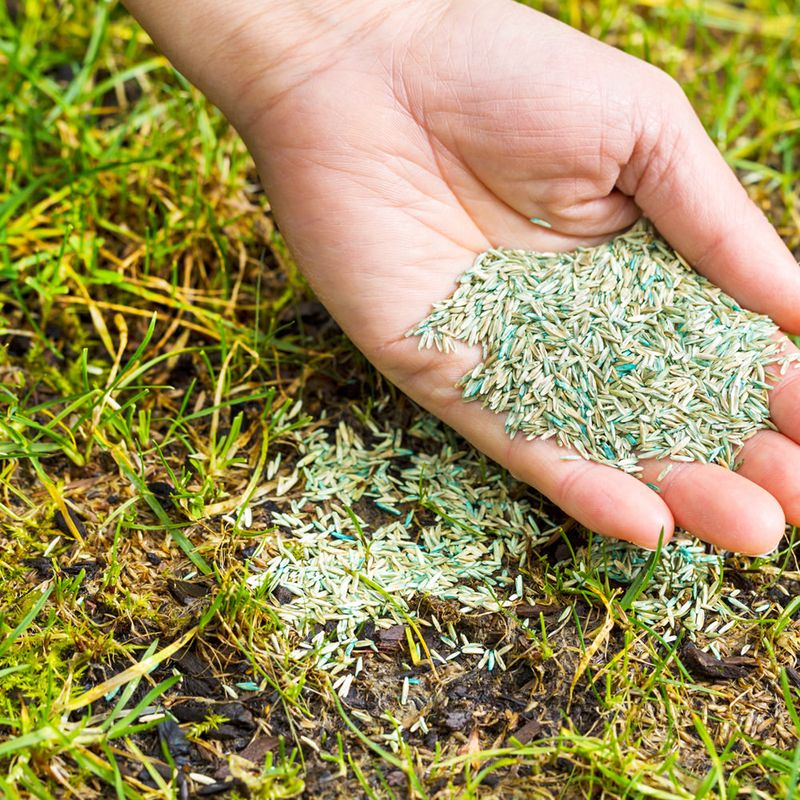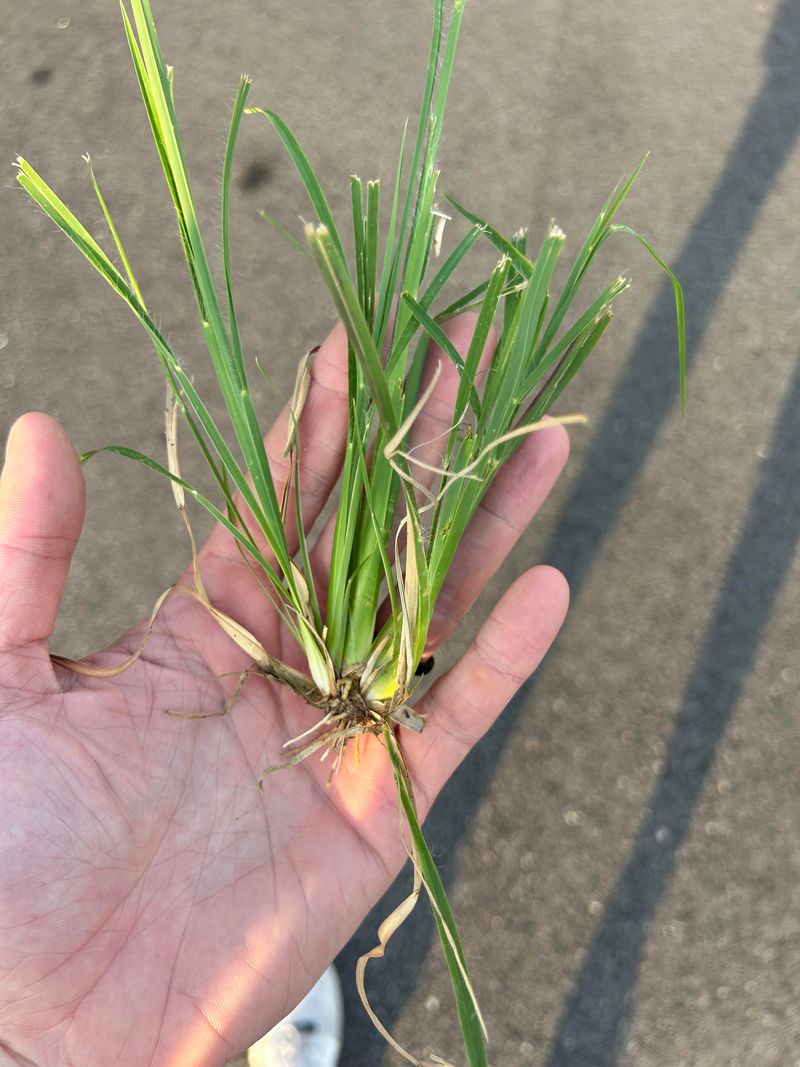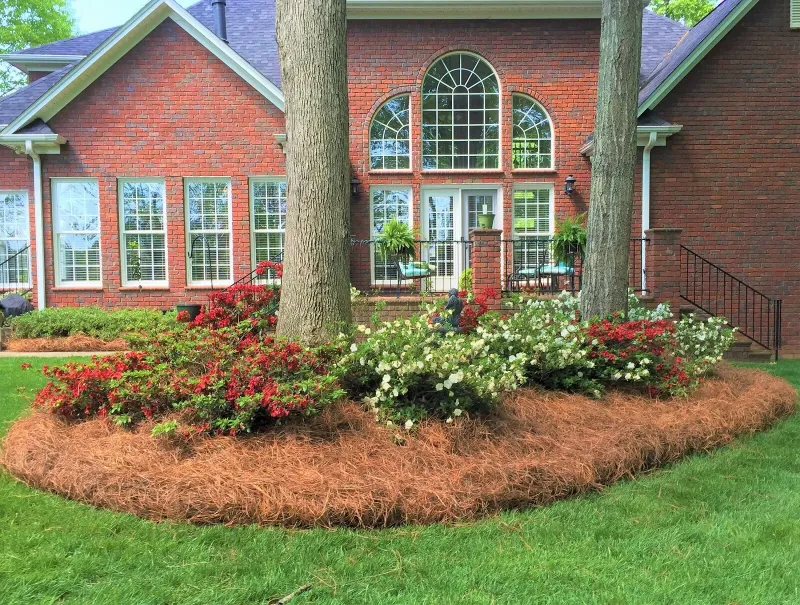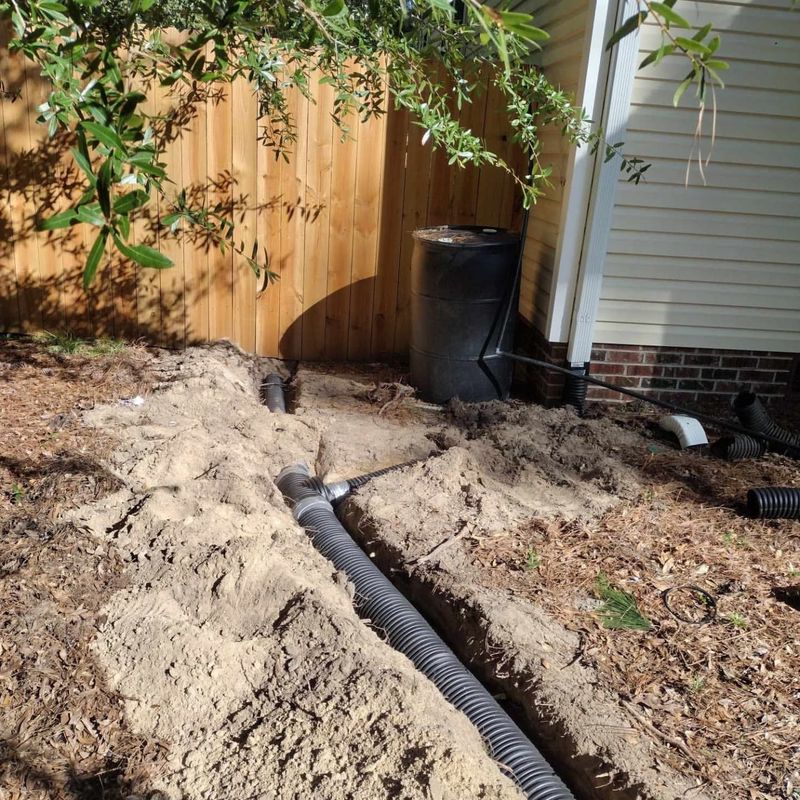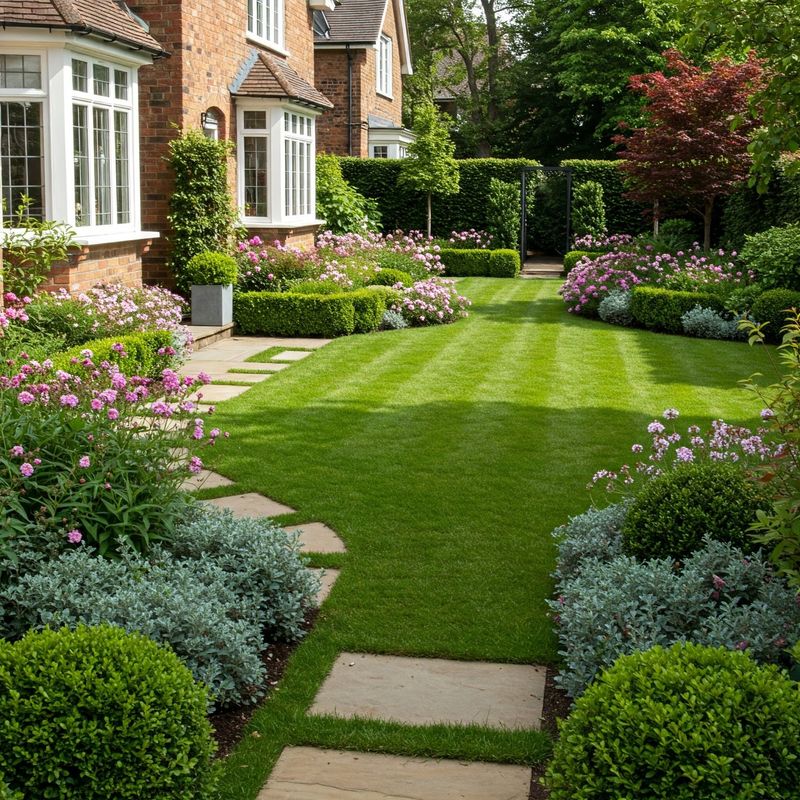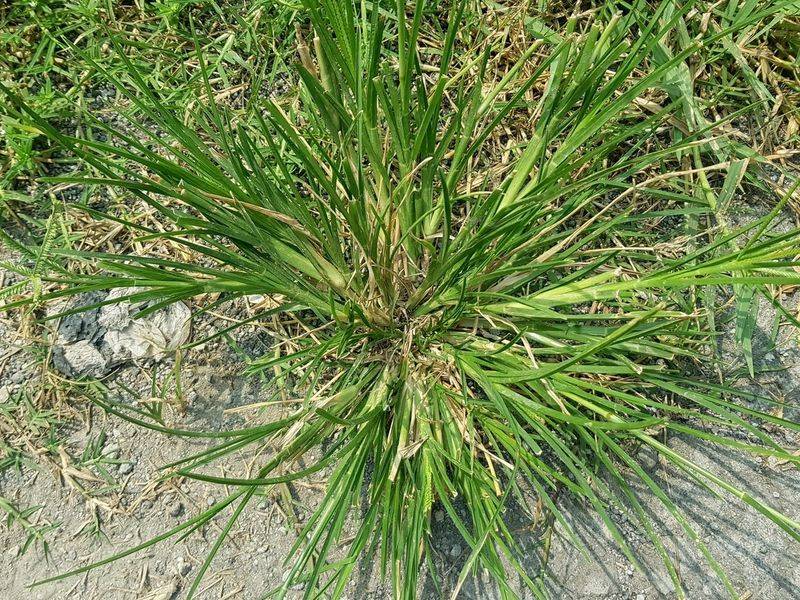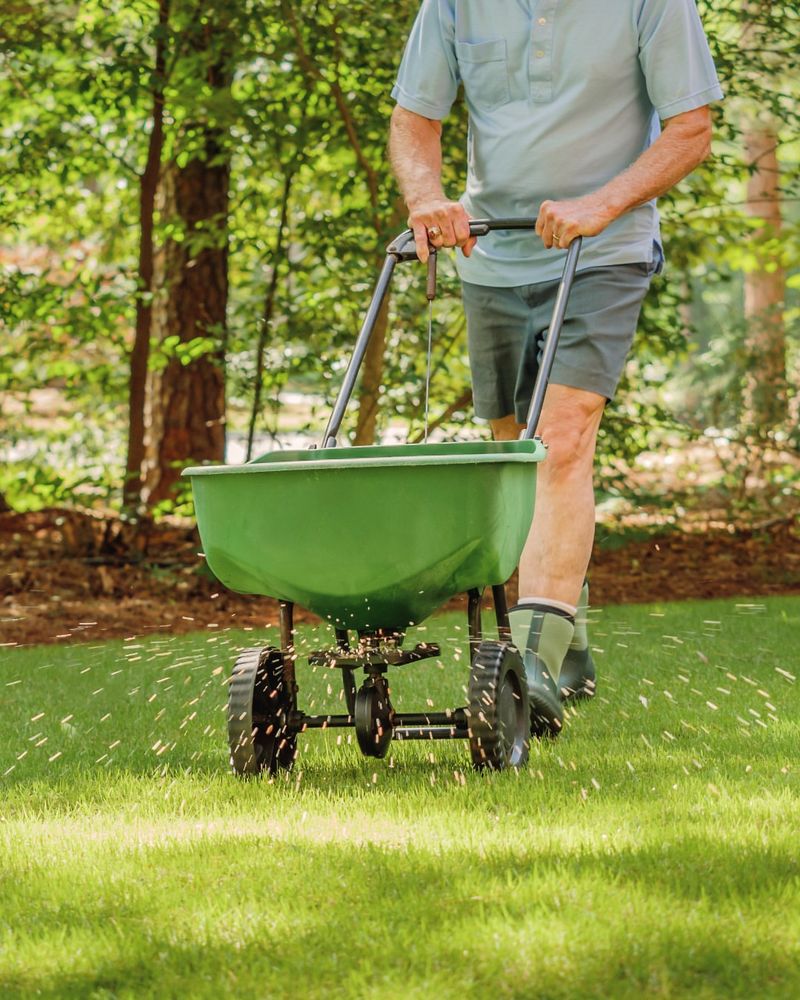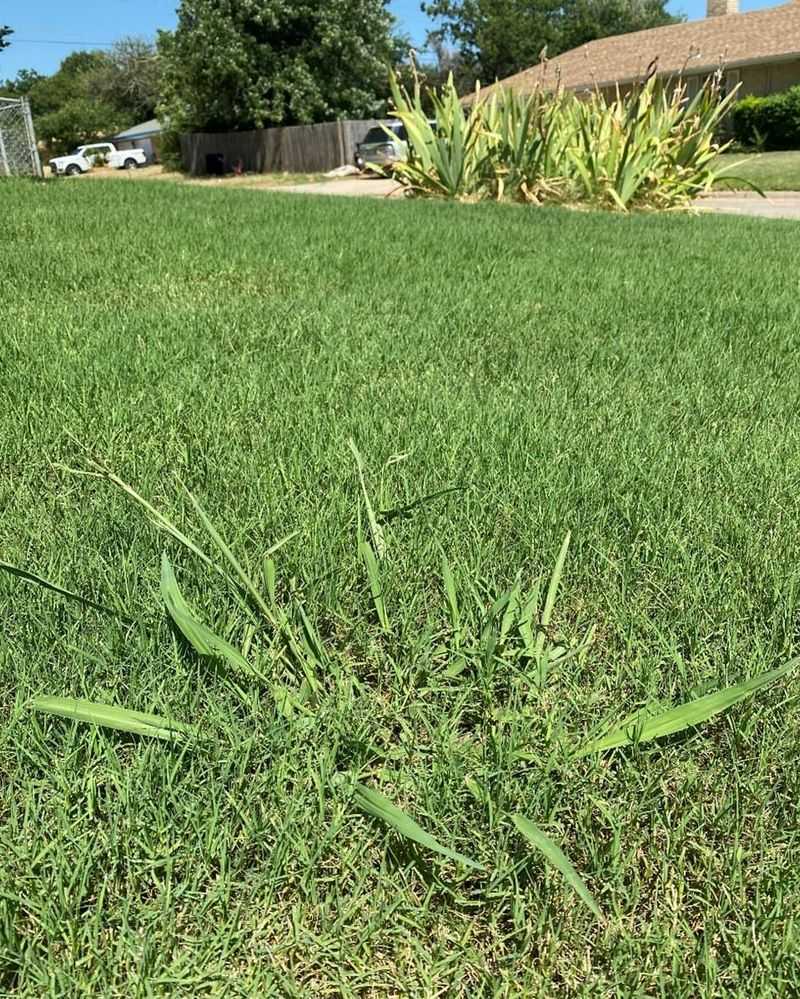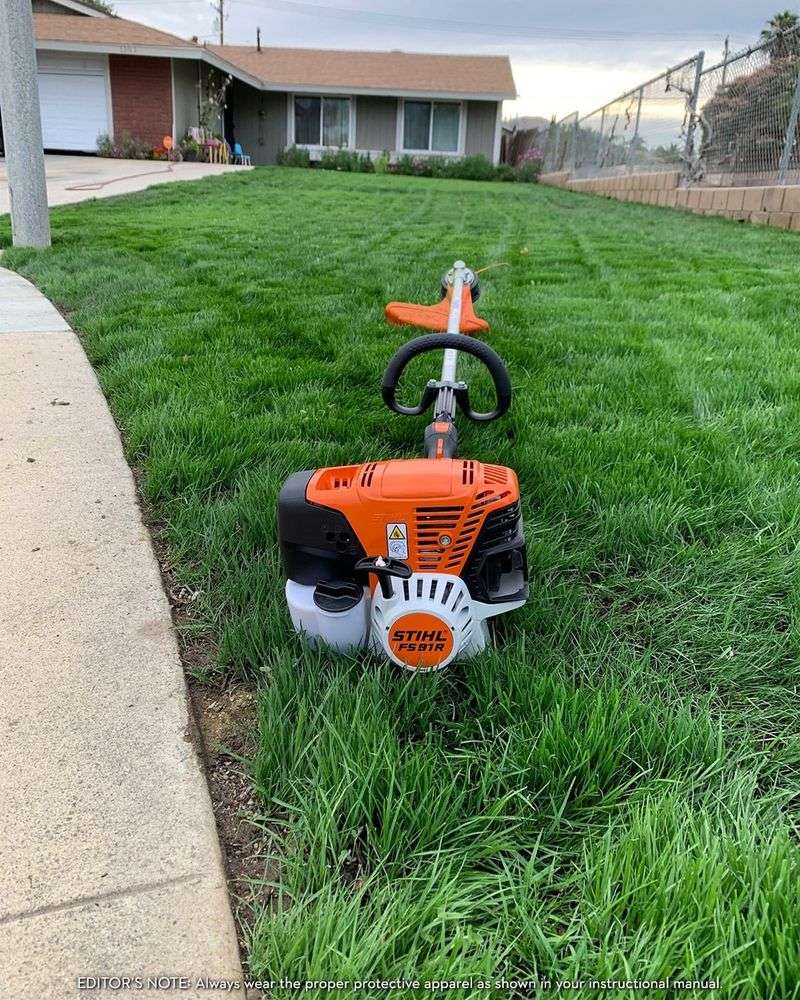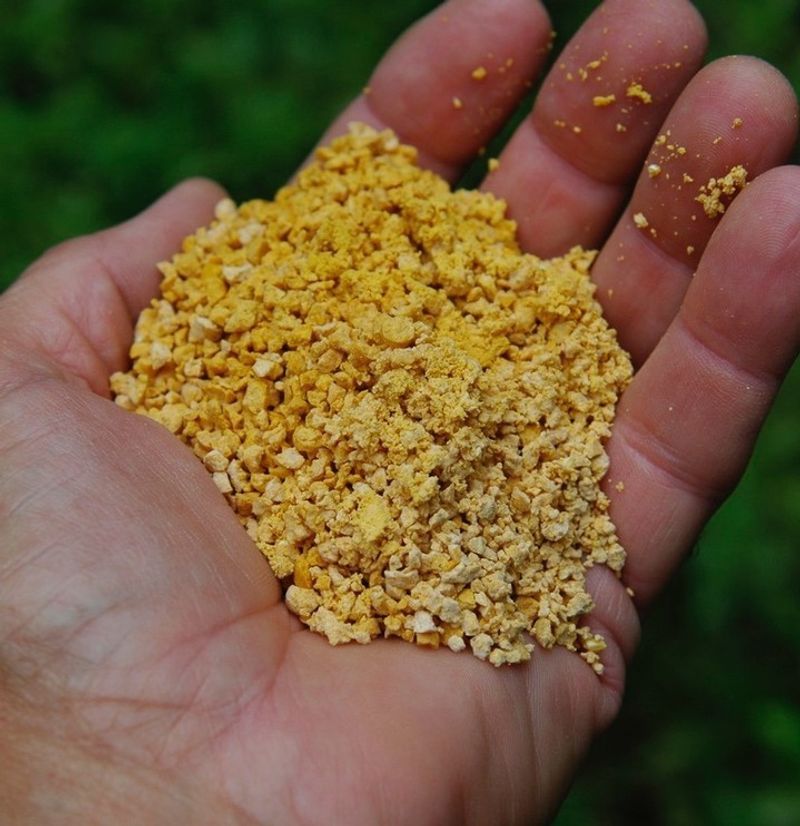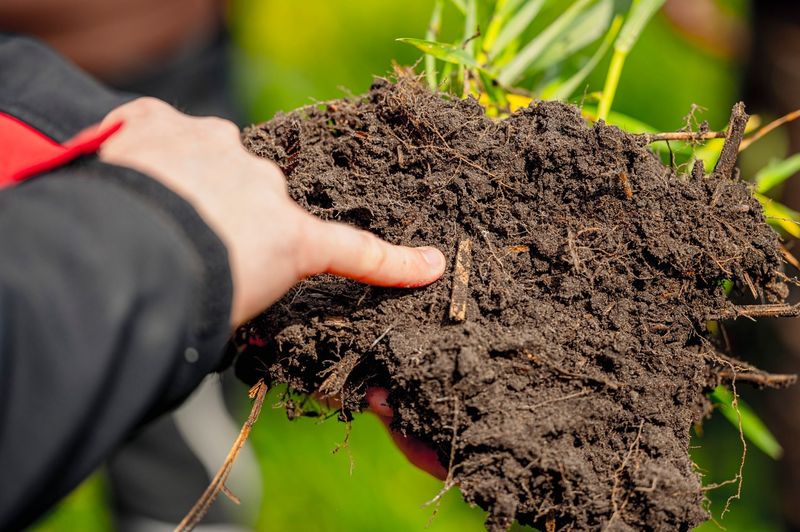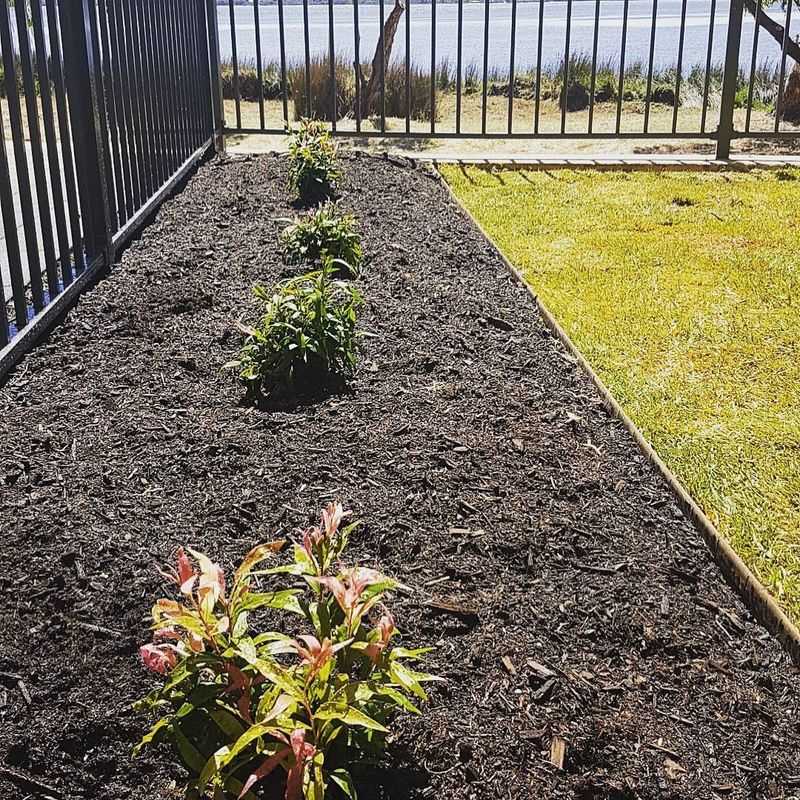Goosegrass, that pesky weed with wheel-like growth patterns, can quickly take over your beautiful Georgia lawn if left unchecked. This stubborn invader thrives in compacted soil and hot weather, making our southern yards perfect targets.
Armed with the right strategies, you can keep goosegrass at bay and maintain a lush, weed-free yard all season long.
1. Maintain Proper Mowing Height
Keeping your grass at the right height creates shade that prevents goosegrass seeds from germinating. For Bermuda grass, aim for 1-2 inches, while tall fescue should be kept at 3-4 inches.
The taller grass canopy blocks sunlight from reaching the soil surface where goosegrass seeds wait to sprout. Remember to never remove more than one-third of the grass blade during a single mowing session to maintain lawn health.
2. Aerate Compacted Soil
Goosegrass loves packed-down soil, so grab an aerator tool and punch some breathing holes in your lawn. Spring and fall work best for this job in Georgia’s climate.
Core aeration removes small plugs of soil, allowing oxygen, water, and nutrients to penetrate deeper. Loosening compacted areas creates healthier soil conditions that favor your lawn grass rather than weeds like goosegrass.
3. Apply Pre-Emergent Herbicides
Timing matters when fighting goosegrass! Apply pre-emergent herbicides in early spring before soil temperatures reach 60°F. Products containing dithiopyr or pendimethalin work effectively against this weed.
Mark your calendar for late February to mid-March in Georgia. Water the product in with about ½ inch of water to activate the chemical barrier. A second application in early summer provides extended protection against late-germinating goosegrass seeds.
4. Water Deeply But Infrequently
Smart watering practices discourage goosegrass growth while promoting deeper grass roots. Apply 1-1.5 inches of water once or twice weekly rather than light daily sprinklings.
Deep watering encourages grass roots to grow downward, increasing drought resistance. Morning watering (between 4-10 AM) is ideal in Georgia’s climate, allowing foliage to dry during the day and reducing disease problems that weaken your lawn and create openings for goosegrass.
5. Overseed Thin Areas
Bare patches in your lawn roll out the welcome mat for goosegrass. Fill these gaps by overseeding with appropriate grass varieties for Georgia like Bermuda, Zoysia, or tall fescue.
Fall overseeding works best for cool-season grasses, while late spring is ideal for warm-season varieties. Prepare the area by raking lightly, then spread seeds evenly. Keep the area consistently moist until new grass establishes, creating natural competition that prevents goosegrass from taking hold.
6. Remove Existing Plants By Hand
Spotted some goosegrass already? Grab it by the root! Water the area first to soften the soil, then use a weeding tool to dig under the plant and pull the entire root system.
Manual removal works best when plants are young and haven’t produced seeds. The distinctive wheel-shaped growth pattern makes goosegrass easy to identify. Dispose of pulled plants in the trash rather than compost to prevent spreading seeds throughout your yard.
7. Apply Mulch In Garden Beds
Garden areas need protection too! Apply a 2-3 inch layer of mulch in beds and around trees to suppress goosegrass germination and growth.
Pine straw, a Georgia favorite, works wonderfully as it breaks down slowly and stays in place. Hardwood mulches also provide excellent weed suppression. Refresh your mulch annually in spring as Georgia’s warm temperatures accelerate decomposition, ensuring continuous protection against goosegrass.
8. Improve Soil Drainage
Poor drainage creates stressed areas where goosegrass thrives. Improve water flow by grading your yard properly and addressing low spots that collect water.
Consider installing French drains in persistently wet areas of your Georgia yard. Adding organic matter like compost to heavy clay soils improves structure and drainage. Better soil conditions favor desirable grasses over opportunistic weeds like goosegrass.
9. Use Post-Emergent Herbicides Carefully
For established goosegrass, selective post-emergent herbicides containing fenoxaprop or quinclorac can help. Apply during active growth when temperatures are between 65-85°F for best results.
Always follow label instructions precisely. Spot treat rather than broadcast spraying whenever possible. Many post-emergents work best on young goosegrass plants, so treat early when weeds are small and actively growing for maximum effectiveness in your Georgia lawn.
10. Reduce Foot Traffic On Lawn
Constant walking compacts soil and damages grass, creating perfect conditions for goosegrass to establish. Install stepping stones or pathways in high-traffic areas across your yard.
Consider creating designated play areas with mulch or other materials to reduce lawn impact. Rotating where you place lawn furniture, kiddie pools, or other items prevents creating permanently stressed areas. Reducing compaction naturally decreases goosegrass’s competitive advantage in your Georgia landscape.
11. Fertilize Appropriately
Healthy grass outcompetes goosegrass naturally. Get your soil tested through Georgia’s Extension Service to determine exact fertilizer needs rather than guessing.
For warm-season grasses common in Georgia, apply fertilizer when the lawn is actively growing, typically April through August. Avoid excessive nitrogen, which can actually encourage some weeds. Slow-release fertilizers provide steady nutrition without the rapid growth spurts that can weaken grass.
12. Monitor Irrigation Systems
Faulty sprinklers create wet and dry spots that stress your lawn and invite goosegrass. Check your irrigation system monthly during growing season to catch problems early.
Look for clogged heads, misaligned sprayers, or leaking connections. Use catch cups to verify even water distribution across your Georgia lawn. Smart controllers that adjust based on weather conditions prevent overwatering, which favors shallow-rooted weeds like goosegrass over desirable turf grasses.
13. Clean Equipment Between Uses
Goosegrass seeds hitch rides on lawn equipment! Clean mower decks, trimmer heads, and other tools after each use, especially if you’ve been working in areas with known goosegrass.
Use a brush or air compressor to remove debris from equipment. This simple step prevents spreading seeds to unaffected areas of your yard. Washing equipment occasionally with a garden hose removes built-up grass clippings that might contain weed seeds.
14. Apply Corn Gluten Meal
Looking for an organic option? Corn gluten meal acts as a natural pre-emergent herbicide. Apply at a rate of 20 pounds per 1,000 square feet in early spring.
This natural byproduct of corn processing inhibits root formation in germinating seeds. As a bonus, it contains about 10% nitrogen, providing gentle fertilization for your established lawn. Reapply every 5-6 weeks during Georgia’s long growing season for continued protection against goosegrass.
15. Address Soil pH Imbalances
Georgia soils tend to be acidic, but extreme pH levels favor weeds over turf grass. Test your soil and adjust pH to the 6.0-7.0 range that most lawn grasses prefer.
Apply lime to raise pH if soil is too acidic, following test recommendations for application rates. Proper pH improves nutrient availability to your lawn grass, increasing its vigor and competitive ability against invaders like goosegrass. Most Georgia lawns benefit from lime applications every 3-5 years.
16. Use Landscape Fabric Under Mulch
For garden beds and around trees, combine landscape fabric with mulch for maximum goosegrass prevention. Cut X-shaped slits for existing plants and pin the fabric securely.
Choose professional-grade, permeable fabric that allows water and nutrients to pass through while blocking weed growth. Cover with 2-3 inches of mulch for aesthetic appeal and additional protection. This combination approach provides excellent long-term control in non-lawn areas of your Georgia landscape.
17. Create Physical Barriers
Edging materials like brick, stone, or metal create sharp boundaries between lawn and garden areas, preventing goosegrass from creeping across borders. Install edging 2-3 inches deep for effectiveness.
These barriers also prevent lawn grass from invading garden beds. Regular maintenance ensures continued effectiveness – check twice yearly for edging that has shifted or risen above soil level. Clean edges make your Georgia yard look more professional while providing practical weed control benefits.

